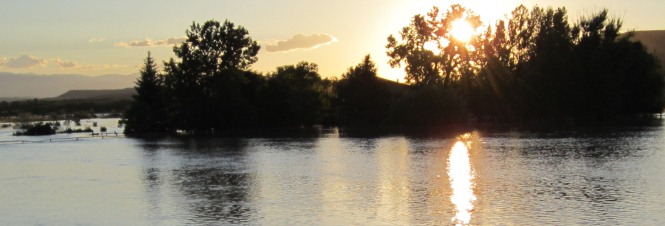Hydrology Professional Development Series (PDS) 2:
Executive Producer - Katie Collins Garrett (OCWWS/HSD)
See below for descriptions of the job competencies associated with each of the three Professional Competency Units (PCU). Specific instructional components for each PCU, with associated abilities and job skills, are available from the PCU pages linked below.
Hydrology PDS 2 Site
PCU 1: Calibrate a Model Producers - Laura Diamond (CR/NCRFC) and Mark Strudley (WR/WFO Monterey, CA)NWS hydrologic forecasting requires simulations that are representative of the systems they seek to emulate so that projections of hydrologic conditions in the future can be made with accuracy and confidence. Hydrologic forecasters, whether at an RFC or WFO, need to understand how the parameters embedded within the structure of existing, vetted hydrologic models affect simulation outcome and calibration. To conduct simulation calibration, hydrologists will need to describe drainage basin topology, assemble quality-controlled historical forcing datasets, characterize the hydraulic routing behavior through usage of unit hydrographs and routing schemes, and configure system simulation architecture and data retrieval. Hydrologists will also need to make the choice of whether to pursue manual or automated means of parameter estimation. Automated methods introduce a new set of control parameters that govern the selection of a non-dominated set of parameter values for the hydrologic model being calibrated.
PCU 3: Evaluate the Hydrological Forecasts and Services Producers - Dave Streubel (AR/APRFC), Rick Koehler (OCWWS/TD/FDTB), and Laura Diamond (CR/NCRFC)
Performing a periodic comparison between the forecasts and the conditions which occurred and reviewing forecast justification will enable forecasters to continuously improve the services they provide to our customers and partners.
Accuracy and skill are two performance measures for any hydrologic forecast. To become a better forecaster, it is not enough to simply know that a forecast did not verify based on a specific standard. A forecaster must determine what went into a forecast and identify methods for improvement. This is done through forecaster development that allow assessment of the forecast relative to the inputs and operational environment under which the forecasts were issued and communicated. In other words, we need to evaluate all aspects of the NWS hydrologic forecast process in order to improve services to the public and other partners.





